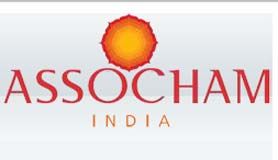Floriculture industry to cross Rs 8K crore mark by 2015: ASSOCHAM

Rose demand spikes by 25% ahead of V day; single stem to cost over Rs 60Growing at a compounded annual growth rate of about 30 per cent, India’s floriculture industry is likely to cross Rs 8,000 crore mark by 2015, apex industry body ASSOCHAM said today.
Currently, the floriculture industry in India is poised at about Rs 3,700 crore with a share of a meagre 0.61 per cent in the global floriculture industry which is likely to reach 0.89 per cent by 2015, according to a study titled, ‘Indian Floriculture Industry: The Way Ahead’ released by The Associated Chamber of Commerce and Industry of India (ASSOCHAM).
Besides, the global floriculture industry is likely to cross Rs 9 lakh crore mark by 2015 from the current level of about Rs 6 lakh crore and is growing at a CAGR of 15 per cent, said the ASSOCHAM study.
With a share of about 65 per cent rose flower industry in India accounts for over Rs 2,400 crore of the overall floriculture industry and rose accounts for 75 per cent of the global floriculture industry, said the study.
Rising demand from tier II and III cities apart from urban centres is likely to spur demand for roses this Valentines’ Day as price of export quality cut rose is likely to quadruple from its current average ruling price of about Rs 15 to Rs 20 per stem, apex industry body ASSOCHAM said today.
The Associated Chamber of Commerce and Industry of India (ASSOCHAM) interacted with about 250 rose merchants including the cultivators, exporters, wholesale flower dealers and florists in Bangalore, Chennai, Delhi, Mumbai and Pune to gauge the scenario vis-à-vis business of rose flower during the Valentine’s week considering India is also world’s biggest rose grower.
Demand for roses has spiralled upwards by over 25 per cent in domestic and by about 30 per cent in international markets as the V-Day draws closer, said over 55 per cent of all the respondents.
Fall in the value of rupee against major currencies is the prime reason behind this upsurge in demand for roses in international markets of Australia, Germany, Greece, Italy, New Zealand, the Netherlands,the United States, the United Kingdom and other countries of Europe and the Middle East.
While, growing demand for roses from cities like Ahmedabad, Chandigarh, Hyderabad, Surat, Kanpur,Lucknow, Patna among others is driving the high demand for roses in the domestic circuit.
Besides, majority of flower growers also said they are hoping for about 30 per cent rise in terms of revenue during February alone with a turnover of about Rs 10 crore.
Labour dogs and rising input costs, high fuel and freight costs apart from sky-rocketing prices of fertilisers tough competition from major rose producing countries like Israel, Kenya and Ethiopia are constantly hurting the margins of the domestic rose industry, said about 70 per cent of respondents.
Crude handling of cut flowers after cutting leads to poor realization of Indian roses in the international markets, said majority of respondents emphasizing that it is imperative to increase production levels to ensure India has a better and bigger share in the global rose market.
Many rose cultivators and growers said they are experimenting by growing genetically modified roses thereby injecting roses with different types of genes to help them fight diseases, fungal pathogens after they have been picked up and extend their ‘vase life’ by making roses live longer.
About 40 crore cut roses are grown across India every year and Karnataka alone accounts for about 75 per cent followed by Maharashtra, Tamil Nadu, Bihar, West Bengal, Uttar Pradesh, Haryana, Punjab, Jammu and Kashmir, Andhra Pradesh and Madhya Pradesh, said ASSOCHAM.
Source : ASSOCHAM











